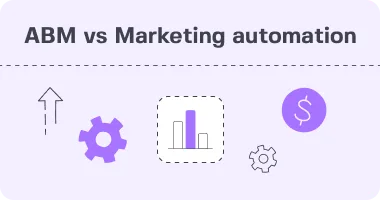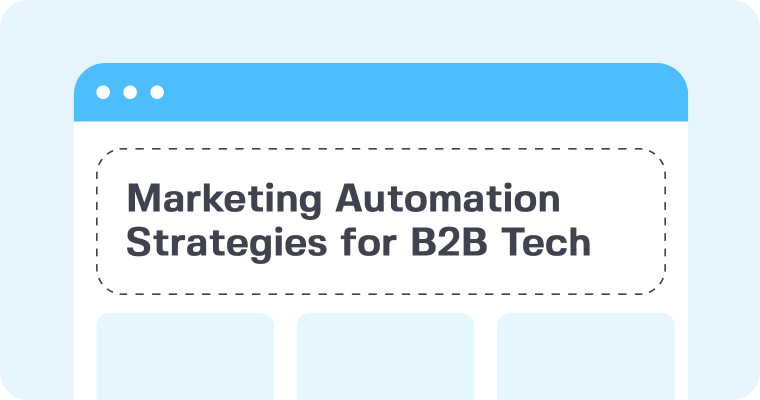You might be familiar with the saying, “Two heads are better than one.” This couldn’t be more accurate in the business realm, especially regarding the alignment of sales and marketing teams. If you’re a CEO, a marketing executive, or a vice president, understanding the criticality of this alignment is paramount. It’s not just about co-existing; it’s about strategically interlocking goals, processes, and mindsets.
Identifying Challenges in Enterprise Sales and Marketing Alignment
If your sales team isn’t sharing insights about what’s going on with your prospects and customers, your marketing folks are in a tough spot. They end up creating generic campaigns and content because they’re missing those valuable nuggets of information.
Likewise, if your marketing team isn’t cluing in sales about the latest content trends and what they suggest about customer pain points, your sales conversations might not hit the mark. It’s like trying to solve a puzzle with only half the pieces.
Optimizing Resource Utilization and Customer Engagement
Imagine a scenario where sales and marketing are rowing in opposite directions. The result? A lot of effort, but no progress. This disconnect often leads to inefficient use of resources, missed opportunities, and less than ideal customer engagement. The challenge here is not just to bridge this gap but to build a well-oiled machine where both departments propel the business forward in harmony.
Here is a great visualization on aligning sales and marketing from Hubspot:
A Step-by-Step Guide to Aligning Sales and Marketing in Enterprises
At 42DM, we believe that the most efficient strategy for sales and marketing alignment is Account-based marketing (ABM). So, here are the guide of implementing ABM to your company as well as useful martech tools that can help align your sales & marketing efforts.
1. Define Common Objectives
- Align marketing and sales teams with common goals, such as revenue targets, customer acquisition, or market share growth.
- Incorporate Account-Based Marketing as a strategy to focus efforts on high-value target accounts, who easily convert to sales-ready opportunities.
2. Develop Ideal Customer Profile (ICP)
- Bring together marketing and sales teams to define the Ideal Customer Profile, ensuring clarity on the characteristics of high-potential accounts.
- Use your updated ICP for ABM, a strategy that thrives on a well-defined ICP, allowing personalized strategies for specific accounts
3. Shared Content Strategy
- Ensure marketing produces content tailored to the needs and pain points identified by sales.
- Leverage ABM to create hyper-personalized content for individual target accounts, increasing engagement.
4. Implement Unified Technology:
- Invest in marketing automation and CRM tools that facilitate seamless data sharing between marketing and sales.
- Use our custom Hubspot as your all-in-one AMB platform
- Integrate ABM-specific tools that enable precise targeting, personalized outreach, and effective tracking. We use Bombora, Triblio and G2.
5. Establish Communication Protocols:
- Schedule regular meetings between marketing and sales teams to discuss progress, challenges, and adjustments.
- Conduct workshops specifically focused on ABM strategies, fostering collaboration and understanding.
6. Lead Scoring Collaboration:
- Collaborate on lead scoring criteria to ensure marketing delivers leads that meet sales qualifications.
- Fine-tune lead scoring for ABM, emphasizing account-level engagement metrics and intent signals.
7. Feedback Loops and Continuous Improvement:
- Establish open channels for feedback between marketing and sales to address challenges promptly.
- Leverage the iterative nature of ABM to continuously refine strategies based on real-time insights and feedback.
8. Measure Shared KPIs:
- Define and track shared Key Performance Indicators (KPIs) that reflect joint success.
- Introduce ABM-specific metrics, such as account penetration and engagement lift, to gauge the effectiveness of targeted strategies.
9. Celebrate Joint Success:
- Acknowledge and celebrate joint successes, reinforcing a collaborative and aligned culture.
- Specifically highlight successes achieved through ABM efforts, showcasing the impact on high-value accounts.
Here is a great visual from Hubspot that can help you with our tips! These examples will offer you practical, actionable insights that can be tailored to your unique enterprise needs.
Remember, aligning sales and marketing is a journey, not a destination. It requires commitment, strategic collaboration, and a continuous improvement mindset. By adopting this approach, you’re not just aiming for success; you’re setting it up with no chance for failure. And if you want a reliable partner to help with your sales & marketing efforts, contact 42DM – we are here for you!


















